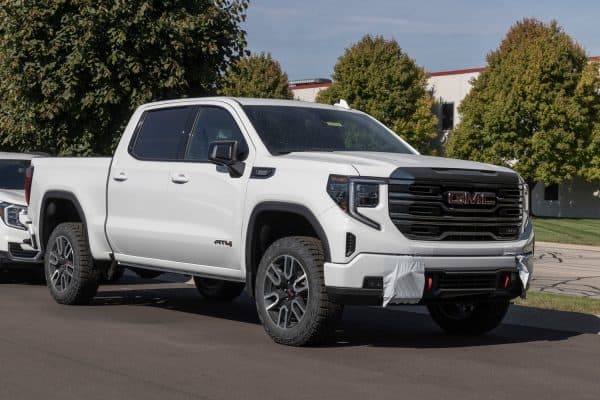Understanding the parts of a pickup truck can help improve your relationship with the vehicle. For instance, you might be able to finish maintenance tasks faster than before. So now you’re wondering about the different parts of a truck. We researched this topic for you to give you the following answer.
Like relatively all vehicles, a pickup truck is an intricate array of different parts that should function as a complete unit. Although these parts are plenty, you can categorize them into different classifications and subclassifications, such as:
- Main body
- Cabin
- Bed
- Front-end assembly
- Suspension
- Springs
- Rods
- Shock absorbers
- Engine
- Engine block
- Cylinder head
- Crankshaft
You should learn as much as you can about the different parts of the pickup truck. That way, you can know about your vehicle better than before. So continue reading as we talk about these components in greater detail.
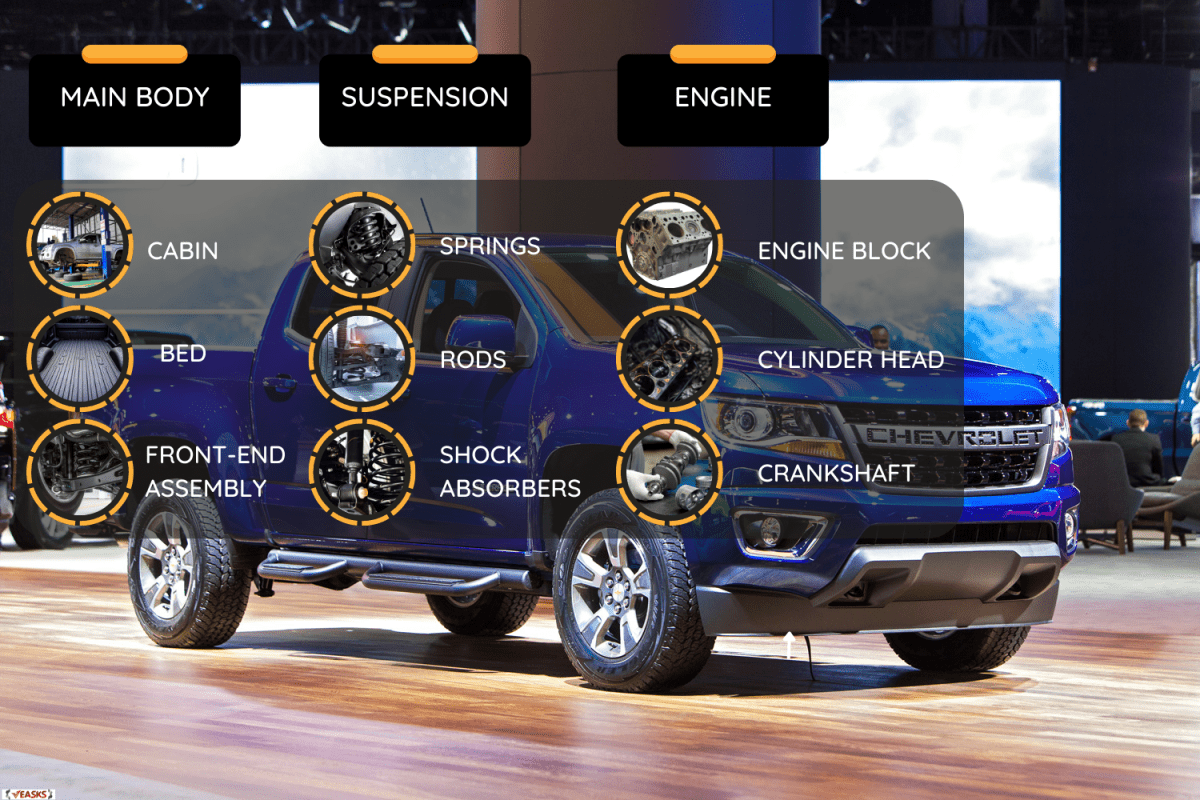
Parts Of A Truck Body
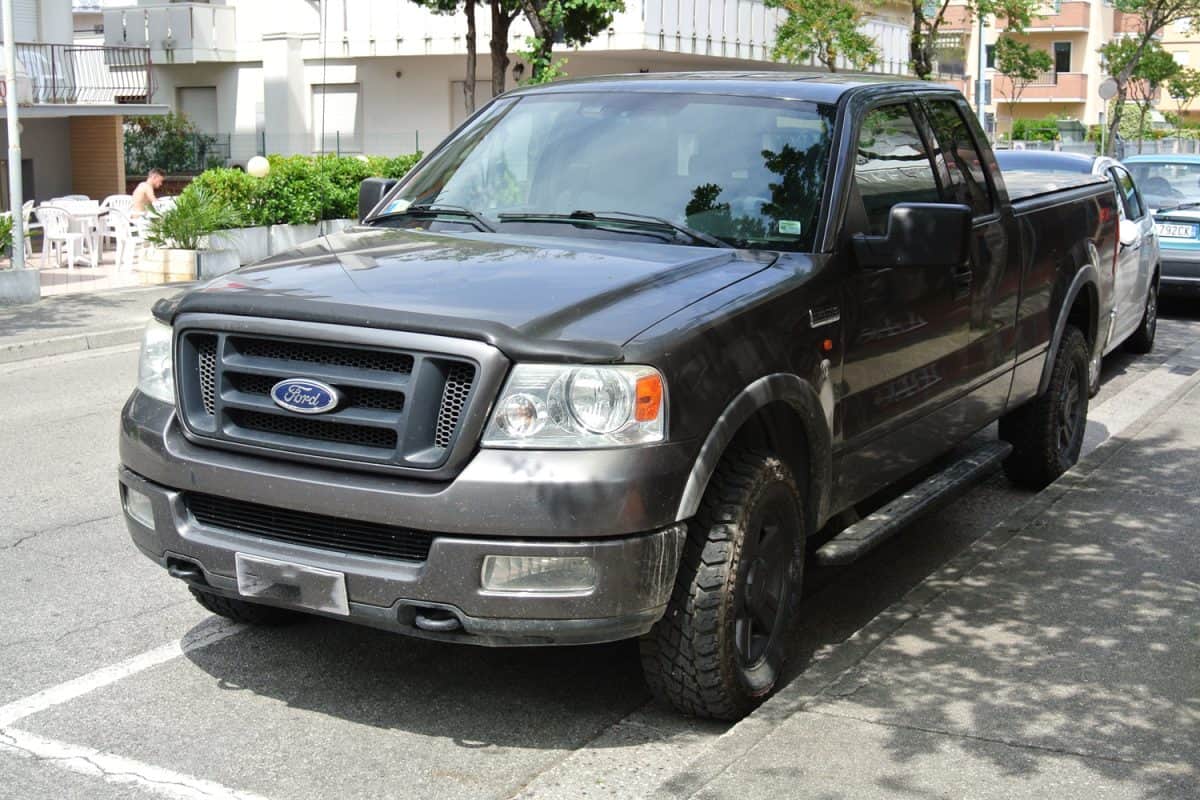
The main body of the pickup truck comprises three main sections, which are:
- Cabin
- Bed
- Front-end assembly
Like the other areas of the pickup truck, the main body's components serves different purposes and house various features.
Truck Cabin
Also called the cab, the truck’s cabin generally comes in four different styles. These cab configurations are:
- Regular: Typically has one row of indoor seating in the middle of two-door access.
- Extended: May have two or four doors to gain entry to the cabin, and the interior might have a second row of seating for additional passengers.
- Crew: A longer version of the extended cab with four doors to enter the truck’s cabin.
- Extended crew: An even longer version of the extended cabin to help fit additional people.
Truck Bed
Unlike most sedans and SUVs, trucks typically have open cargo spaces called beds. These cargo bays usually don’t have covers, although many aftermarket truck bed covers are available for purchase on the market.
Take note that truck beds often come in different sizes. For instance, the typical short bed is usually 6 feet and 5 inches. On the other hand, the standard long bed is about 7 feet long.
Aside from holding cargo, many truck beds offer additional features to their users. For example, the 2020 Honda Ridgeline RTL-E has a built-in power outlet at its bed. You can plug certain devices into that outlet to power them.


Check out this truck bed cover on Amazon.
Truck Front-End Assembly
Generally, a pickup truck's front-end assembly has two main components: (1) the steering and (2) the suspension.
The steering is responsible for turning the truck in the direction you want it to go. It generally connects to the steering knuckles through tie rods.
On the other hand, the suspension has parts like ball joints, bushings, and control arms. Its function is to maximize the traction between the truck’s tires and the immediate surface.
Other Parts
Aside from the cabin, bed, and front-end assembly, other notable parts of a pickup truck's body include:
- Bumper: Typically found at the truck’s front to help protect the vehicle, along with the driver and passengers, during accidents.
- Fender: A component that helps mitigate water, snow, and other debris from entering the wheel’s openings.
- Rocker panel: Generally found in the front and rear tires, and these parts function to stabilize the truck from these locations.
- Wheelhouse: Helps protect the wheel assemblies from potential harm.
- Hood: A container that helps shield the engine and other internal assemblies from different hazards.
Parts Of A Truck Suspension
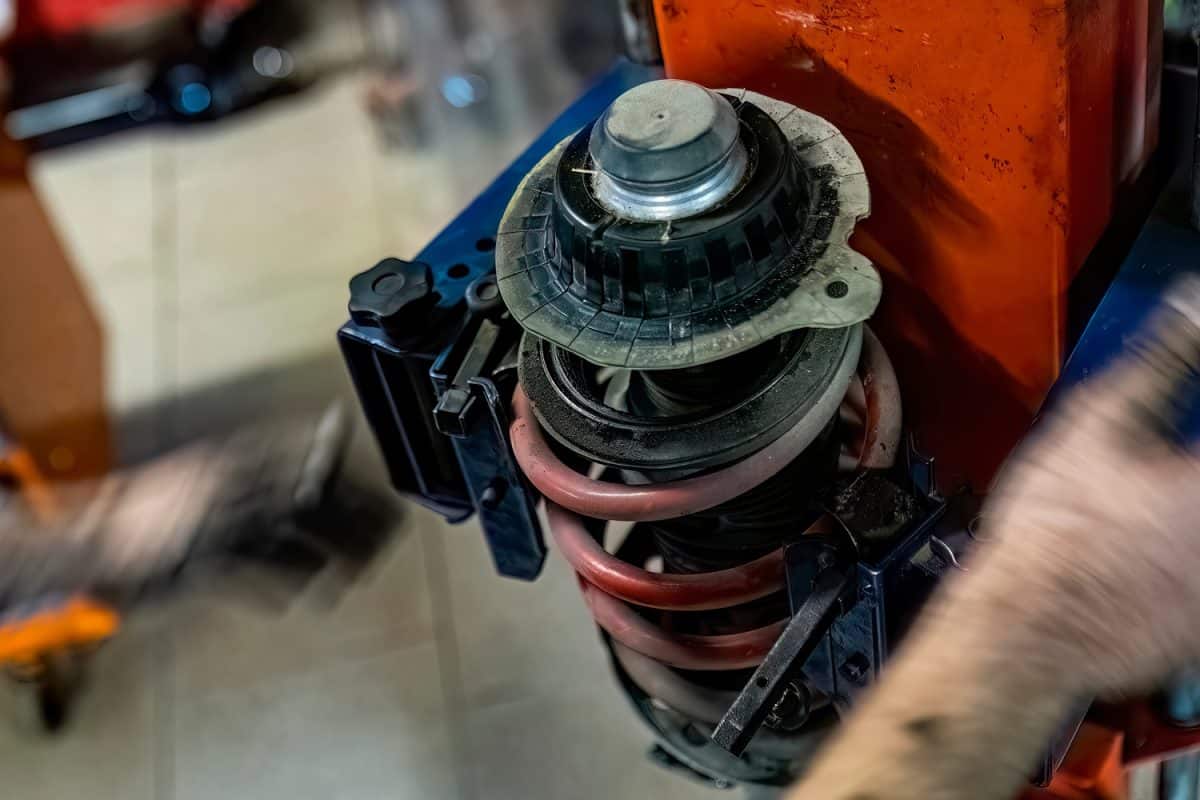
As mentioned earlier, the truck’s suspension system has components that help make the most of the allowable traction between the tire and the road. To make this framework function optimally, it has different parts:
Springs
Automobile suspension springs are the links that connect the wheels to the truck’s main body. These parts have two main responsibilities:
- To compensate for the truck's stability when going over uneven surfaces and provide optimal comfort levels, and
- To ensure that the wheels remain on the ground
Like many parts of the truck suspension springs can deteriorate over time. You can prevent further harm to your vehicle if you replace the old springs with new units before they break. Some of the signs to watch out for are:
- One area of the truck is sagging
- Unknown noises when going through bumps
- Uneven tire wear
- Truck bounces significantly
Rods
Also called the torque rods, these components link the entire suspension system for it to move as a cohesive framework. Also, these rods help limit the axles’ movement to prevent them from moving excessively.
Normally, a truck’s suspension rods may last a lifetime. However, rods that go bad may endanger the entire suspension system, along with the truck’s entire stability. Replacing the suspension rods as fast as possible at the first sign of harm can help reduce the risks of accidents and injuries.


Check out this suspension kit with rods on Amazon.
Shock Absorbers
As the name implies, shock absorbers absorb and take in the strain from the truck's overall movement while driving. That way, these parts can improve and stabilize the overall ride.
Although called shock absorbers, it's also possible to call these parts dampeners or dampers, as these components dampen the stress felt by the truck, particularly when driving on uneven terrain.
Bear in mind that it’s unsafe to drive a truck or any vehicle with bad shock absorbers. Doing so will make the tires bounce more than they should, which may promote harm to the driver, passengers, and nearby people.
Parts Of A Truck Engine
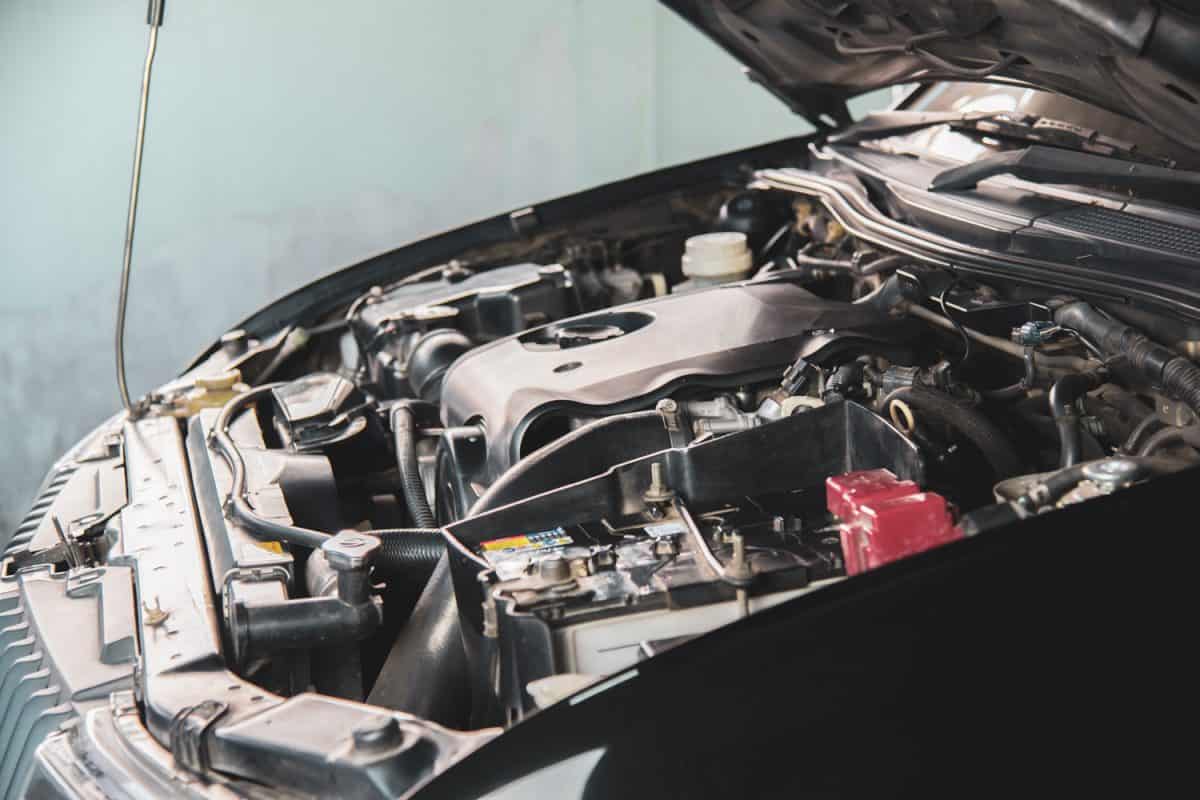
Remember, the engine is akin to the truck’s heart. This important assembly keeps the vehicle alive by using fuel (or electricity in the case of a truck with an electric motor) to use its different functions.
Like a human heart, a truck’s engine should work properly if its parts are well. Continue reading this section to learn about some of the important components of this assembly.
Engine Block
Typically made of aluminum, this large component is the engine’s core. It also houses the pistons, which help provide sufficient power to the truck’s other assemblies and parts.
Cylinder Head
Usually found above the combustion chamber, the cylinder head is the home to other parts of the engine, namely the intake and outtake valves. It also helps provide adequate space above the combustion chamber for the ignition.
Crankshaft
The crankshaft is responsible for the pistons’ up and down motion. It also connects to the engine’s serpentine belts, which also help supply sufficient power to the truck’s other components.
What Is The Most Expensive Repair On A Truck?
A diesel engine is perhaps the most expensive part of the truck to repair. Significant harm encountered by the components in that assembly may result in you shelling out over $10,000 in repair costs.
In comparison, a gas truck engine is less expensive to repair than a diesel model. Still, you may have to pay about $3,000 to $7,000 to repair it using professional automotive services.
Which Truck Is Cheapest Repair?
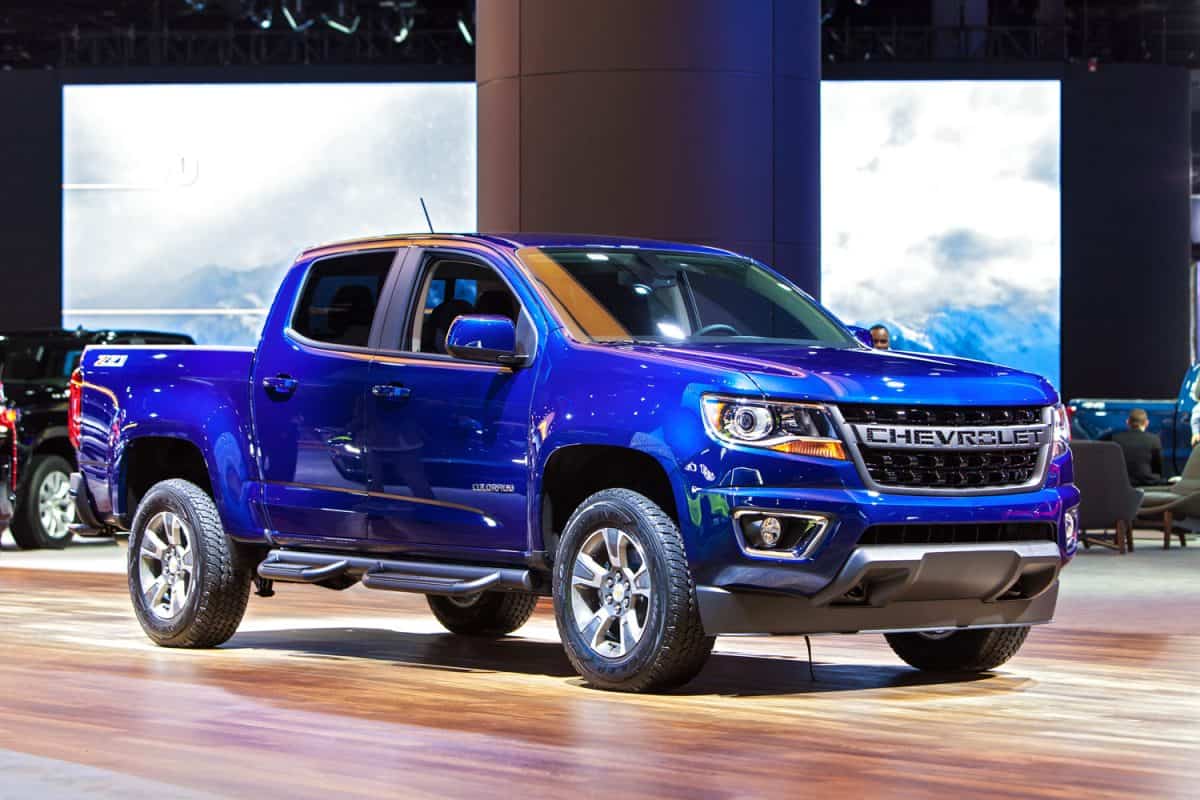
Despite some truck parts demanding expensive repair fees, some trucks may require less costly repairs than others. Some of these vehicle models are:
- 2019 Chevy Colorado
- 2019 Chevy Silverado
- 2019 GMC Canyon
- 2019 Nissan Frontier
- 2019 Toyota Tundra
Final Thoughts
You can separate the different parts of a pickup truck into different categories like the main body, suspension, and engine.
Now that you reached the end of this post, you should now have a better idea of your truck's various components. So you should now know how these parts work, allowing you to increase your chances of diagnosing your vehicle properly if something’s amiss.
If you want to learn more about pickup trucks, check out these other great reads:

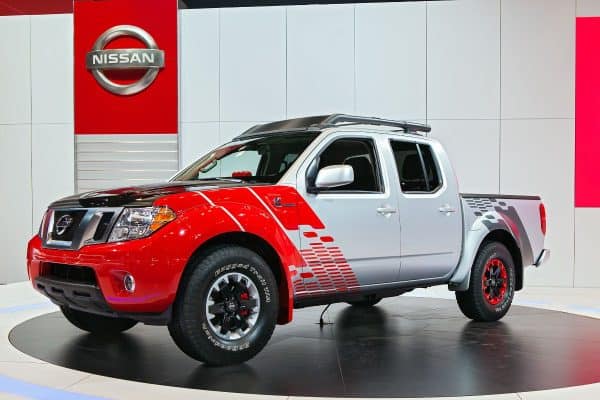
![Portrait of middle aged bearded truck driver standing by the truck and showing his commercial driver license. Focus on CDL license. Truck driving school and job openings, Do You Need A CDL To Drive A Box Truck [By State]](https://veasks.com/wp-content/uploads/2022/11/PORTRA1-600x400.jpg)
